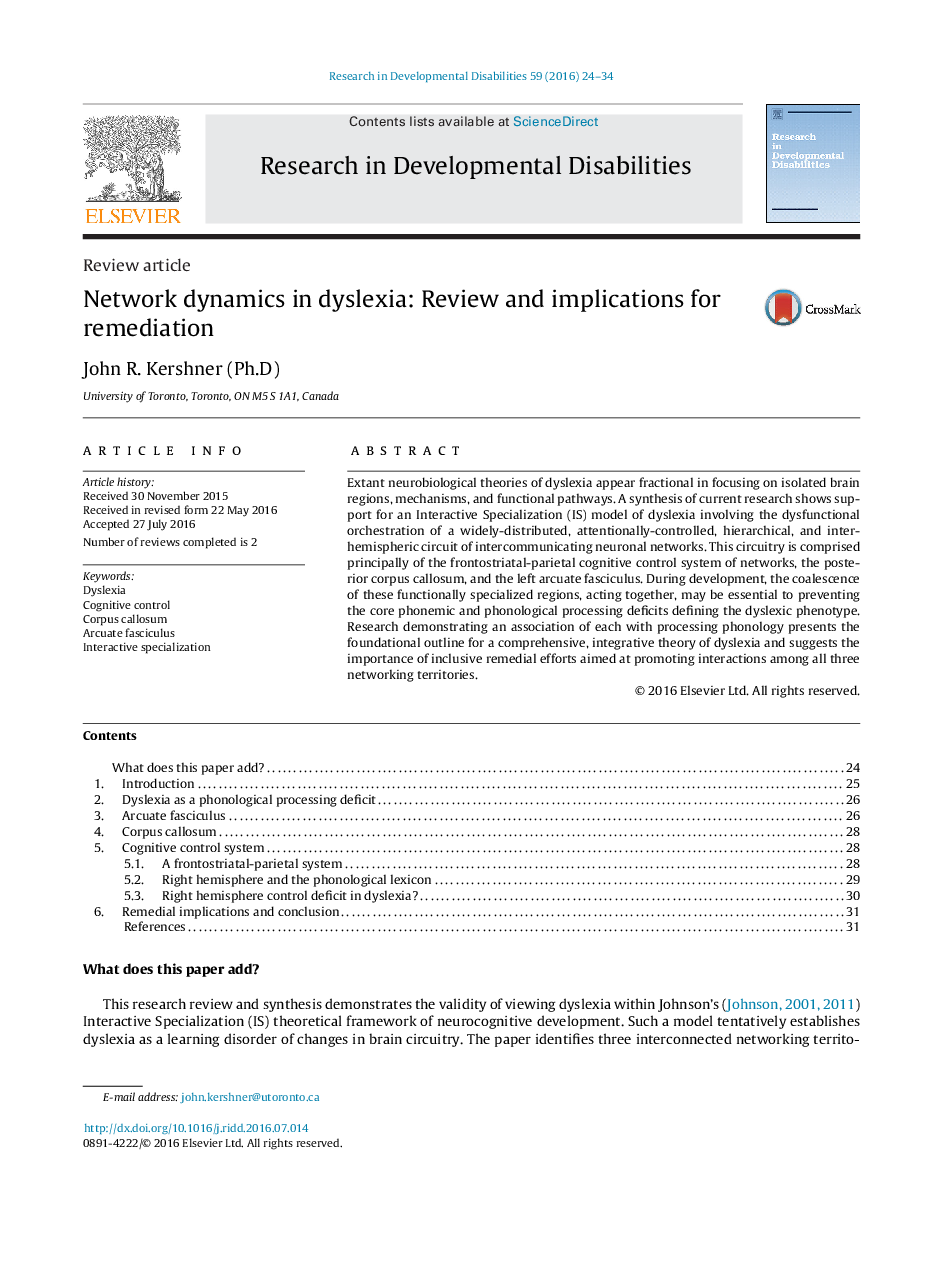| Article ID | Journal | Published Year | Pages | File Type |
|---|---|---|---|---|
| 370959 | Research in Developmental Disabilities | 2016 | 11 Pages |
•Phonological processing deficits are shared in-common by a majority of people with dyslexia.•Phonological processing engages a circuitry involving the corpus callosum, lt. arcuate, and the rt. cognitive control system.•Research shows a deficit in all three of these neuronal territories in dyslexia.•Dyslexia is conceptualized within an Interactive Specialization cognitive theory as a disability of changes in brain circuitry.•Remedial strategies based on this model should involve all three areas and stress training in cognitive control.
Extant neurobiological theories of dyslexia appear fractional in focusing on isolated brain regions, mechanisms, and functional pathways. A synthesis of current research shows support for an Interactive Specialization (IS) model of dyslexia involving the dysfunctional orchestration of a widely-distributed, attentionally-controlled, hierarchical, and interhemispheric circuit of intercommunicating neuronal networks. This circuitry is comprised principally of the frontostriatal-parietal cognitive control system of networks, the posterior corpus callosum, and the left arcuate fasciculus. During development, the coalescence of these functionally specialized regions, acting together, may be essential to preventing the core phonemic and phonological processing deficits defining the dyslexic phenotype. Research demonstrating an association of each with processing phonology presents the foundational outline for a comprehensive, integrative theory of dyslexia and suggests the importance of inclusive remedial efforts aimed at promoting interactions among all three networking territories.
